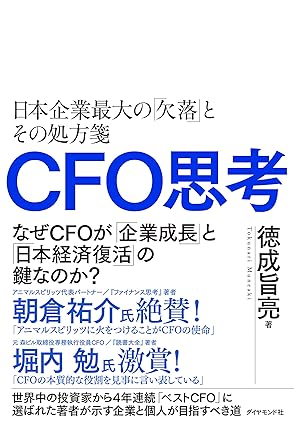Notes on Reading CFO Mindset

I read 'CFO Thinking'. I'll make some notes on the points that caught my attention.
Piketty's Inequality
In 'Capital in the Twenty-First Century', the author Thomas Piketty presented the inequality 'r > g'. 'r' represents the rate of return on capital, and 'g' represents the economic growth rate. Piketty's analysis of tax data from over 20 countries for the past 200 years showed that the returns on investment have been outpacing the growth in wages.
Looking at the growth rates of the global elite, this is understandable. Of course, it also depends on the growth rate of the company you belong to and the principal amount, so it can't be generalized.
Cost of Capital
Equity (shareholders' capital) is not free; it has a cost. Just as you pay interest when borrowing from a bank, you incur a 'cost of capital' when raising capital from investors.
Shareholders, who ultimately bear the risk of the company's operations, demand a certain return in exchange for that risk. In the case of Japanese companies, the cost of capital is approximately 8%.
In other words, they are required to earn a return on equity (ROE) of at least 8%. If 100 million yen is invested, they must be able to generate 108 million yen. The stock price tends to rise above the 8% threshold.
It's a strange way of putting it, but you need to be able to make money by using money. This is a weak point for our company, and something we want to strengthen going forward.
Also, companies with high forecast accuracy, where the actual results are close to the forecasted numbers, have a lower cost of capital than companies with large upward or downward forecast revisions.
To lower the cost of capital, it is important to provide 'no-surprise management' that is reassuring to investors.
The Three Roles of Capital
- To serve as a risk buffer to save the company when risks materialize (ensuring financial soundness)
- To provide the resources for growth investments (realizing growth)
- To provide the resources for shareholder returns (enhancing shareholder returns)
As the CFO, you have the best view of how much risk your company can take. The CFO should not just be a gatekeeper, but should maximize the acceptable level of risk-taking.
Hierarchy and Priorities of Stakeholders
Stakeholders have a stake in the company. The table below shows the order of debt payments by the company, but shareholders are not included as creditors.
Stakeholder | Company's Obligation |
|---|---|
Employees | Pay wages |
Customers | Provide products |
Suppliers | Pay purchase prices |
Financial institutions | Pay interest and principal |
Local community | Pay taxes |
If the company goes bankrupt, its assets will be liquidated and used to pay off the claims of each stakeholder. If there are any residual assets left after all payments, they will go to the shareholders, but if not, the shares become worthless.
Payments to shareholders are subordinate to the claims of other stakeholders, so shareholders bear a higher risk. As the ultimate bearers of the company's risk, they have the right to be involved in management (e.g. nominating directors at the shareholder meeting) and to receive certain returns (e.g. dividends).
Japan: The Country Where Companies Least Likely to Fail
In Japan, management decisions are made with the top priority of avoiding the collapse of companies. As a result, Japanese companies have low bankruptcy rates, which has contributed to the stability and low crime rates of Japanese society.
However, there is a concern that Japanese companies may reach a 'not failing but not growing' state. Most listed companies hold excessive capital and cash, and need to adopt a more aggressive posture.
What is required is to balance stability and growth:
- While ensuring the livelihoods of employees, provide high compensation to employees who demonstrate their abilities, regardless of nationality, age, or gender.
- Define an acceptable risk appetite range, encourage challenges within that range, and learn from failures.
- Implement risk management and compliance effectively, focusing on the essentials.
- Move away from excessive formalism and operate the business with a practical, results-oriented approach.
Mismatch between the Time Horizons of Innovation and Investors
Innovations that can change the world require about 20 years from conception to realization. Meanwhile, the time horizon of investors, even long-term ones, is typically around 3 years.
It is important for investors and companies to recognize the differences in their time horizons, and for the CFO to bridge that gap by engaging with both internal and external stakeholders.
Human capital should be viewed not just as a cost on the income statement, but as a off-balance-sheet capital that will generate future income.
Differences in Accounting Standards Between Japan and the US
Accounting standards can lead to significant differences in financial results. There was a 1 trillion yen difference in Mitsubishi UFJ's results between Japanese and US standards. In addition, there is the global IFRS (International Financial Reporting Standards) framework.
For example, under Japanese standards, 'goodwill' arising from acquisitions must be amortized annually, while under US and IFRS standards, the book value of goodwill generally remains unchanged. This makes profits appear lower each year under Japanese standards due to the regular goodwill amortization.
The CFO's role is to select the appropriate 'ruler' (accounting standard), discuss the interpretation of accounting rules with audit firms, and engage with stakeholders using financial statements that the CFO is satisfied with.
Conclusion
This was a difficult book for me, but as someone involved in company management, I was just about able to understand it. (It seems to be targeting an audience of accounting/finance staff and IR personnel.)
I learned a lot, including the perspective of CFOs who interact directly with overseas investors, and the key points for company growth. In fact, I realized how limited my own knowledge is.
The story of Mitsubishi UFJ investing $9 billion to rescue Morgan Stanley during the Lehman Shock was fascinating, and I got quite passionate about it. I was also surprised to learn that 70% of Mitsubishi UFJ's profits come from overseas M&A, which significantly changed my impression of the company.
















